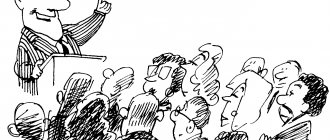Hand trembling in older people usually does not cause much surprise; we most often attribute this disorder to age-related changes. However, involuntary and uncontrollable shaking movements of the limbs (doctors call this tremor) worry not only the elderly: the palms of a baby, a teenager, and a mature person can shake. Let's try to figure out what hand tremor is, why it happens, and what treatment helps with this condition.
Why do young and old hands shake?
Why your hands shake: reasons
Tremor refers to an involuntary oscillatory movement (shaking) caused by muscle contraction. Trembling can be short-term and constant, and the amplitude of movements can also differ - from barely noticeable to very frequent and sweeping.
Tremor can affect different parts of the body: when seeking medical help, some patients complain of trembling in the limbs, others have a shaking head, and in others the whole body. Trembling can be observed on one side (tremor of one hand) or be symmetrical. In this article we will take a closer look at such a condition as tremor in the hands.
Experts distinguish between physiological and pathological tremor.
- In the first case, we are talking about a functional disorder (primary tremor), not associated with any disease - as a rule, such a disorder is temporary and does not require special treatment.
- Pathological (secondary) tremor is a symptom, consequence and/or complication of a certain disease.
Literature:
- A manual on narcology for doctors and paramedics of primary medical care / A. A. Churkin, T. V. Klimenko. / Moscow ; Khanty-Mansiysk / Health and Society, 2006 (Cheboksary: IPK Chuvashia). — 173 p.
- Tremor: pathogenesis, features of the clinical picture, treatment. Ivanova E.O. / Neurological journal. 2013
- Tremor: classification, clinical characteristics. Govorova T.G. / Magazine Consilium Medicum 2021
Need some advice?
OR CALL A DOCTOR
CALL!
+7
Physiological (benign) tremor
- Excitement, fear and anxiety are a fairly common explanation for why arms and legs shake. This state is well known to emotional people who are intensely experiencing certain events and who take everything that happens around them to heart. In such situations, people say “the ankles are shaking,” implying feelings of strong excitement. Once a person calms down, the tremor disappears on its own.
- Prolonged physical stress is another cause of involuntary trembling of the limbs. Professional athletes, people whose profession involves strenuous work with small objects (jewelers, watchmakers, surgeons), as well as loaders - it is not uncommon for them to experience muscle trembling under tension.
Why do young and old hands shake?
- Trembling limbs in infants is often due to the fact that their nervous system is not fully formed. Temporary tremor occurs under the influence of various stimuli: for example, the child is hungry, scared, does not want to bathe, change clothes, etc., and against the background of all this, rhythmic muscle contraction can be observed. Of course, parents need to ensure that the baby is monitored by a specialist to make sure that the baby’s development is progressing normally (tremors are often observed in the first months of a child’s life in cases where there was a difficult pregnancy and/or birth injuries).
- Hand trembling at a young age can be associated not only with anxiety (for example, during exams), physical overexertion during sports training, but even with ordinary hypothermia. The latter sometimes leads to involuntary muscle contraction, resulting in shaking hands. Another reason for shaking hands in teenagers is hormonal imbalances.
- People who abuse alcoholic beverages and also take various stimulants (drugs, tranquilizers) deserve special attention. Why are their hands shaking? Alcohol and drugs overstimulate nerve cells (resulting in uncontrolled muscle contraction), which can lead to damage to the nervous system and brain.
Alcohol addiction is one of the reasons why hands shake
It should be noted that temporary trembling of the hands can be a consequence of the effects of tonic drinks (strong tea, coffee), as well as medications. Before taking any medicine, you need to carefully study the instructions - tremor may be indicated in the side effects section (some chemical compounds, affecting the psychoneurological sphere, cause undesirable consequences).
If trembling of the limbs is a functional disorder, it is enough to eliminate the provoking factor, and the unpleasant phenomenon will go away on its own. For example, in case of alcohol poisoning, it is necessary to detoxify the body, and hand tremors will disappear (provided that at this stage brain damage has not yet occurred and toxic polyneuropathy has not developed). If the tremor bothers you for a long time (more than two weeks), you need to undergo an examination.
Pathological tremor: causes
Pathological trembling of the limbs is usually associated with various deviations of the nervous system (disruption of the activity of various parts of the peripheral and central nervous system). Hand tremors in this case are a symptom of a serious systemic disease. Most often, prolonged trembling of the limbs is associated with the following pathologies:
- Parkinson's disease. Tremor occurs as a result of damage to the subcortical structures of the brain. Feature - trembling increases during periods of rest and decreases when performing any actions. Often the tremors are asymmetrical in nature (there is less tremors on one side and less tremors on the other).
Incurable neurological disease - Parkinson's disease
- Multiple sclerosis. Another disease in which the hands shake (with multiple sclerosis, the upper limbs most often tremble).
- Damage to the cerebellum. The causes of damage (changes in the cerebellum) are most often poisoning and traumatic brain injury. Feature – trembling intensifies with active and purposeful movements.
- Diseases of the endocrine system. Hand trembling is a fairly common symptom in people with endocrine disorders. Tremors often occur due to an excess of thyroid hormones. Along with this symptom, patients complain of weakness, increased sweating and irritability.
- Alzheimer's disease (hand tremors are one of the symptoms of the disease).
- High or low blood pressure.
- Cervical osteochondrosis. This disease leads to impaired blood supply to the brain, which can cause neurological pathologies.
Degenerative changes in the cervical spine
- Encephalitis (after a bite by an encephalitis tick, convulsive trembling of the hands usually appears).
- Hypoglycemia (a decrease in blood glucose levels increases the activity of the sympathoadrenal system, and, as a result, tremors appear in the hands).
- Poisoning – food, chemical, medicinal. When poisoning occurs, the body becomes intoxicated. Due to toxins, normal motor activity is disrupted, which can result in tremors.
A special type of pathology is essential tremor. As a rule, this is a hereditary disease that is not associated with disorders of other systems. A person complains of periodic trembling of the limbs (most often of both hands), sometimes this manifests itself when writing (writer's cramp). The first symptoms of the disease usually appear after 45 years of age.
Diseases that cause trembling of the limbs
There are various diseases, the presence of which can lead to tremor. Among them are:
- Endocrine pathology: hyperparathyroidism, thyrotoxicosis, pheochromocytoma, hypoglycemia;
- Strokes of various origins;
- Infectious diseases: encephalitis, neurosyphilis;
- Metabolic disorders: Wilson-Konovalov, Hallervorden-Spatz disease;
- Tumors: angiomas, cancer, hematomas;
- Polyneuropathy of various origins.
- Neurological pathology: multiple sclerosis, encephalopathy, cerebral palsy, Alzheimer's disease, Parkinson's disease, Pick's disease, Huntington's chorea, cerebellar degeneration.
In most cases, tremor is a symptom of Parkinson's disease. There is an opinion that this is a problem for older people (previously this was considered the norm). But essential tremor (also called “hereditary”) now occurs in young people, and the proportion of such cases reaches 20%.
Diagnosis of tremor
If you experience tremors in your hands, you should first consult a therapist. In the future, you may need the help of a neurologist, psychologist, toxicologist, endocrinologist and/or other specialists.
When diagnosing, the doctor focuses on the patient’s complaints. An external examination and functional tests are carried out (the patient is asked to stretch his arms forward, write something, the sensitivity of different parts of the body is checked, gait is assessed, etc.). Additionally, laboratory tests may be prescribed (if endocrine diseases are suspected), as well as MRI and/or CT scan of the brain.
Types of tremor
Different diseases have their own characteristic signs, and in order to figure out why your hands are shaking, the doctor clarifies how exactly the pathology manifests itself. Thus, a distinction is made between resting tremor and action tremor.
In the first case, involuntary movements occur when a person does not do any active actions (just sits, stands, lies). In the second case, the opposite is true: during rest there is no trembling, but as soon as a person wants to do something (pick it up, put it down, etc.), uncontrolled muscle contractions begin.
In addition, doctors distinguish between several types of tremor depending on the source of the disorder. For example, if tremors are associated with damage to the cerebellum, they speak of cerebellar tremor; if nerve fibers are damaged, neuropathic tremor is diagnosed. One of the most difficult cases is damage to the midbrain (rubal tremor). If your medical record says “dystonic tremor,” then the problem is related to disturbances in the functioning of the muscular system.
Cerebellum
Hypokinesia
Hypokinesia is a decrease in motor activity. General stiffness of movements is characteristic. In order to make any gesture, the patient must make an effort. Outwardly, it looks as if the movements are made after a pause, they are slow.
A person's gait changes. He moves in small mincing steps, with his feet parallel to each other. The arms do not move in time with the walking, but are pressed to the body. Facial expressions suffer. The face becomes motionless and impassive. The display of emotional reactions is delayed. Such people rarely even blink. The voice changes, it becomes monotonous and dull. If a person utters a long sentence or phrase, it fades towards the end.
Hand tremors - treatment
As mentioned above, physiological tremor is reversible and usually does not require special treatment. It is necessary to understand what factor caused the undesirable reaction and eliminate it. As a rule, it is enough to avoid stressful situations, give up frequent consumption of strong coffee and tea, establish normal, full sleep, reduce the intensity of physical activity, and the trembling in the limbs will go away.
As a preventive measure, the patient may be shown a special course of exercises. Activities that promote the development of fine motor skills (knitting, embroidery, drawing, weaving, exercise with an expander, etc.) can be useful. Exercises with weights (you need to pick up something heavy) can help relieve trembling. A simple and effective exercise that anyone can do: clench your hands into a fist and unclench with a sharp movement, repeat 30-50 times.
If the tremor is pathological in nature, the underlying disease must be treated.
- For example, for essential tremor, drug therapy is usually prescribed. Patients are prescribed beta-adrenergic receptor blockers, vitamins, tranquilizers, as well as anticonvulsants and antiepileptic drugs. In some cases, when tremor leads to significant disturbances in activity and discomfort, and medications do not help, the patient may be indicated for surgical intervention, namely, implantation of electrodes in the area of the brain responsible for sensory stimulation.
- For tremors associated with chronic alcohol abuse and, accordingly, alcohol poisoning, you need to fight the addiction itself, and the tremors will go away. However, if you suddenly stop drinking alcohol, a person experiences a so-called withdrawal syndrome, during which their hands begin to shake even more. To alleviate the condition and remove unpleasant symptoms, drug treatment is used: the patient is prescribed calcium antagonists, beta blockers, tranquilizers and other medications.
- With cervical osteochondrosis, physical exercise and massage, which improve blood flow, help.
- In Parkinson's disease, which is still incurable (the disease gradually progresses), in addition to drug therapy, strength exercises are used (treatment in each case is selected taking into account the characteristics of the form of the disease).
There is no need to be embarrassed or ignore the problem if your hands are shaking. It is necessary to figure out what the violation is related to as soon as possible. In most cases, the pathology can be eliminated completely or to such an extent that it does not cause discomfort.
How to get rid of the disease
Alcohol tremors indicate a severe form of addiction. Therefore, it is important not only to eliminate the symptoms of the pathology, but also its cause.
Treatment at home with a doctor's call
To eliminate involuntary muscle contractions and avoid progression of the disorder to a generalized seizure, use:
- saline solutions, cocarboxylase, glucose;
- vitamins (necessarily thiamine, pyridoxine and cyanocobalamin);
- hepatoprotectors;
- means for activating cerebral and peripheral blood circulation, nootropic drugs;
- cardioprotectors;
- painkillers and antispasmodics.
Usually such treatment is sufficient to alleviate the patient's condition. If the tremor persists, the patient is additionally administered drugs from the group of benzodiazepines. They have a double effect: sedative and anticonvulsant.
Inpatient therapy
In any case, it is better to carry out detoxification in a clinical setting, but strict indications for hospitalization are:
- chronic diseases of the cardiovascular system;
- renal and/or liver failure;
- severe neurological pathologies (epilepsy, encephalopathy, recent stroke, history of neuroinfections, traumatic brain injuries);
- risk of developing a generalized seizure;
- signs of delirium, hallucinosis;
- use (in addition to alcohol) of drugs, strong sedatives.
In a hospital, the doctor has more opportunities to resolve the issue than to treat alcoholic tremors. The patient is under medical supervision at all times, basic vital parameters are monitored, and medications are administered almost around the clock.
In addition to medications, the clinic offers hardware detox procedures (ILBI, plasmapheresis). Excellent results are demonstrated by physiotherapy, laser or electromagnetic stimulation of biologically active zones on the body.
In a hospital, you can determine and how to treat the cause of alcoholic tremors - an uncontrollable desire to drink. After detoxification is completed, consultations with a psychotherapist begin, who motivates the patient to finally get rid of addiction.
How to treat the disease yourself
Doctors categorically warn against self-medication, taking any medications (and especially sedatives or anticonvulsants) without prior diagnosis and doctor’s prescriptions. But if for some reason the patient cannot go to a specialized hospital, doctors give several tips on how to alleviate their condition:
- completely eliminate alcohol;
- reconsider your diet and diet: you need to give up coffee, strong tea, and energy drinks;
- moderate physical activity is required (but not before bedtime);
- drink plenty of fluids (at least 1.5 liters of clean water per day);
- go to bed on time, before going to bed, avoid watching gadgets and movies - it is better to replace them with a walk in the fresh air.
But these are only temporary measures; final recovery from alcoholism requires complex long-term treatment and mandatory rehabilitation. But in parallel with addiction therapy, to eliminate alcoholic tremors, correction of concomitant neurological and metabolic disorders is also carried out.











